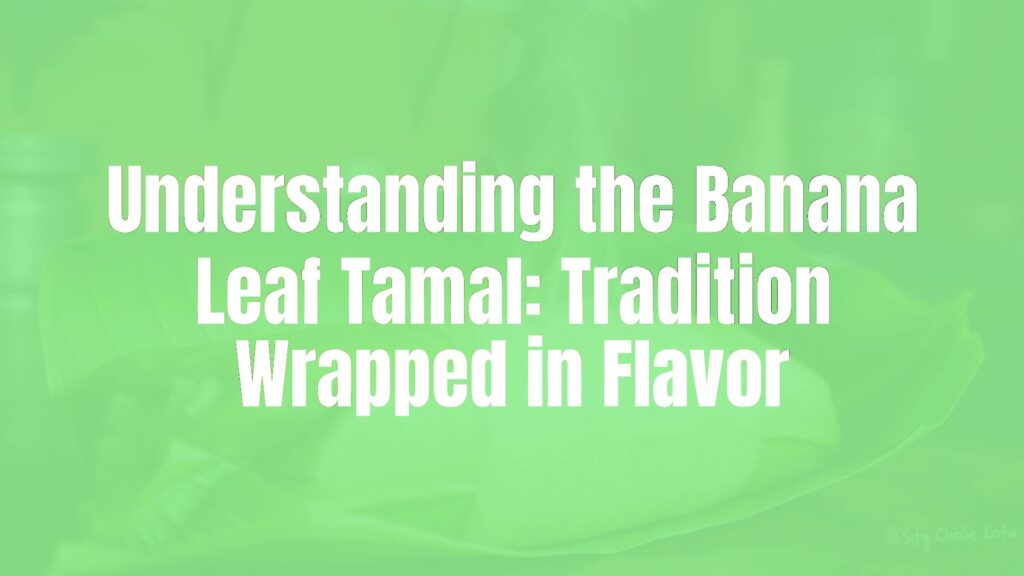The Distinction of the Banana Leaf Tamal
Banana leaf tamal, often recognized for its vivid green wrapper and aromatic qualities, holds a special place in the vast world of tamales. Unlike its corn husk-wrapped counterparts, this tamal boasts a unique appearance, flavor, and cultural resonance, especially in southern Mexico, Central America, and parts of the Caribbean. The banana leaf not only envelops the masa and filling but infuses the tamal with a subtle earthy fragrance that distinguishes it from other varieties.
Cultural Origins and Historical Significance
The use of banana leaves in tamal making traces back centuries, predating European contact in the Americas. Indigenous groups in regions flush with banana plants developed this method both for the abundance and practical attributes of the leaves—firm yet flexible, large, and impermeable to liquids. Over generations, this wrapping medium became a culinary hallmark in areas such as Oaxaca, Chiapas, Tabasco, the Yucatán Peninsula, Guatemala, Honduras, and Cuba. Today, banana leaf tamales are essential to feasts and celebrations, including Día de los Muertos, Christmas, and local fiestas.
Signature Ingredients and Composition
A typical banana leaf tamal features nixtamalized maize dough (masa) as its base, often enriched with lard or vegetable shortening for smoothness. Fillings vary by region but commonly include slow-cooked meats—such as pork in a red or green mole, chicken with pepián, or shredded beef in a tomato-rich sauce. Vegetarian options employ beans, seasoned vegetables, or cheese combined with herbs and chilies. The banana leaves themselves, quickly passed over heat or boiling water, become pliable and easier to fold, imparting their gentle, grassy aroma to the tamal as it steams.
Characteristic Texture, Flavor, and Appearance
Banana leaf tamales are typically larger, moister, and softer in texture than corn husk tamales. The masa tends to be richer and more tender, absorbing the flavors of both its filling and the leaf. The cooking process leaves the tamal with a deep-green, almost glossy outer appearance when unwrapped, often punctuated by the vibrant hues of chilies or a mole sauce inside. The nuanced aroma of the leaf elevates the sensory experience, animating the whole dish.
Regional Variations and Adaptations
Many regions put their own stamp on the banana leaf tamal. In Oaxaca, tamales are frequently filled with mole negro and chicken, producing a deeply savory and piquant taste. Guatemalan tamal de masa features a spiced tomato and chili sauce with pork or chicken, typically garnished with olives, capers, and roasted peppers. Yucatán’s tamal colado is made with strained masa for a smoother texture and paired with recado rojo-seasoned pork or turkey. Across borders, fillings and accompaniments shift according to local preference and ingredient availability.
Ingredient Substitutions and Serving Styles
While banana leaves are ideal, cooks in areas where they are hard to find might substitute them with parchment paper or even aluminum foil, though the signature flavor imparted by banana leaves will be missed. The masa can be adapted for plant-based diets by replacing lard with vegetable fat, and fillings can be tailored to preferences, such as using jackfruit or mushrooms for a hearty vegan option.
How to Enjoy Banana Leaf Tamal
Banana leaf tamales are best served hot, either as a main course or a celebratory snack. Classic accompaniments include a tangy tomatillo salsa, pickled onions, or a simple crema. In many households, they’re paired with atole or hot chocolate. For festive occasions, they might be enjoyed alongside rice, black beans, or plantains. The act of unwrapping the fragrant leaf reveals not only a comforting meal but a deep connection to tradition and community.

